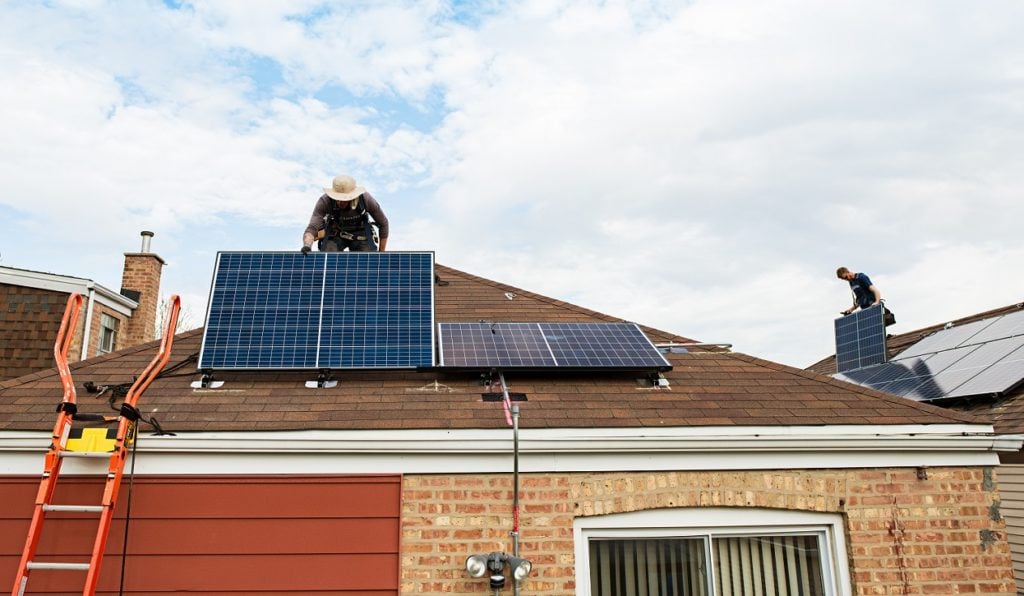
NEM 3.0, the latest iteration of California’s rooftop solar net metering scheme, was passed on Thursday by the California Public Utilities Commission (CPUC). Vocal public debate surrounded the legislation before the vote as solar industry workers and representative bodies called for revisions to the proposed decision.
The now-ratified net metering legislation purports to incentivise battery storage systems in order to bolster grid security and manage loads in peak summer months. To that end, the proposal offers time-flexible export rates that “have significant differences between peak and off-peak prices to incent battery storage and load shifting from evening hours to overnight or midday hours”, the CPUC said in a release.
Unlock unlimited access for 12 whole months of distinctive global analysis
Photovoltaics International is now included.
- Regular insight and analysis of the industry’s biggest developments
- In-depth interviews with the industry’s leading figures
- Unlimited digital access to the PV Tech Power journal catalogue
- Unlimited digital access to the Photovoltaics International journal catalogue
- Access to more than 1,000 technical papers
- Discounts on Solar Media’s portfolio of events, in-person and virtual
To account for the theoretical uptick in storage systems, the legislation will cut export rates for power sold back to the grid by around 75%.
This has been the main focal point of the criticism of NEM 3.0, with many saying that the legislation will make solar less affordable and cause a drop-off in installations. Indeed, PV Tech Premium covered reactions ahead of the vote, citing a study showing that significant net metering changes in other US states have had adverse effects on solar markets.
“The CPUC vote is a loser for California on many levels. For the solar industry, it will result in business closures and the loss of green jobs,” said Bernadette Del Chiaro, executive director at the California Solar and Storage Association (CALSSA). “For our grid reliability needs, it fails to promise robust growth in battery storage. And for California’s race to clean energy, it puts us behind our goals and out of step with the national pro-solar agenda.”
Another key concern has been the time the CPUC has allowed for the market to transition from predominantly solar-led to solar and storage. “With high costs, supply chain constraints, inflation and permitting and interconnection delays and challenges, it will take years before the storage market can match the solar market,” CALSSA said in a press release.
Sean Gallagher, vice president of state and regulatory affairs at trade body the Solar Energy Industries Association (SEIA), echoed these concerns, saying: “The solar and storage industry remains concerned that the transition from net metering to the new net billing structure is too abrupt and threatens to slow the deployment of rooftop solar in California.”
Speaking to PV Tech Premium last week, vice president of public policy at solar installer Sunrun, Walker Wright said: “We want to be installing solar plus batteries, but we also know that there simply aren’t enough batteries out there to deliver what customers want.”
Residential batteries are yet to be scaled to the levels of solar modules, and interconnection, permitting and ongoing supply chain issues have held the storage market back.
The CPUC said that NEM 3.0 includes provisions for expanding solar and storage to low-income Californians, with extra bill credits to the tune of US$630 million set aside to support installations in low-income communities.
CPUC commissioner John Reynolds said: “NEM has left an incredible legacy and brought solar to hundreds of thousands of Californians, but it is also profoundly expensive for non-solar customers and was overdue for reform.
“The future needs a solar programme designed around the value of solar to the grid and one that encourages true carbon reductions at peak energy times, which is after the sun goes down, by creating better incentives for customers to pair solar with batteries.”
In the shorter term, a report from SEIA said that with implementation expected in April of next year, it expects high levels of solar installations until Q3 2023 as customers who submit an interconnection application before the deadline will qualify under NEM 2.0. The association expects 2024 to be the first full year of impacts from the new NEM 3.0 policy, contracting the California market by 39% and causing a 3% contraction in the national market.
California’s residential solar market is regarded as a litmus test for the national situation in the US, and thus has ramifications globally.
“People are rushing to go solar, because they’re afraid the bottom is going to drop out from under the market in three months, and that’s not healthy. That’s not a recipe for continuous stable growth,” said Bernadette Del Chairo.







